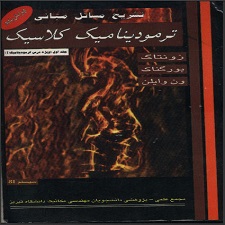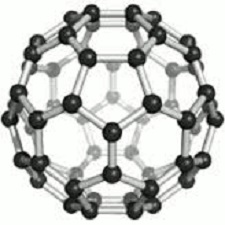توضیحات
ABSTRACT
Research in convective heat transfer using suspensions of nanometer-sized solid particles in base liquids started only over the past decade. Recent investigations on nanofluids, as such suspensions are often called, indicate that the suspended nanoparticles markedly change the transport properties and heat transfer characteristics of the suspension. This second part of the review covers fluid flow and heat transfer characteristics of nanofluids in forced and free convection flows and potential applications of nanofluids. Opportunities for future research are identified as well.
INTRODUCTION
Preparation of nanofluids is the first key step in experimental studies with nanofluids. Nanofluids are not simply liquid-solid mixtures. Some special requirements are essential, e.g., even and stable suspension, durable suspension, negligible agglomeration of particles, no chemical change of the fluid, etc. Nanofluids are produced by dispersing nanometer-scale solid particles into base liquids such as water, ethylene glycol (EG), oils, etc. In the synthesis of nanofluids, agglomeration is a major problem. There are mainly two techniques used to produce nanofluids: the single-step and the two-step method. The single-step direct evaporation approach was developed by Akoh et al. (1978) and is called theVEROS (Vacuum Evaporation onto a Running Oil Substrate) technique .The original idea of this method was to produce nanoparticles, but it is difficult to subsequently separate the particles from the fluids to produce dry nanoparticles. A modified VEROS process was proposed by Wagener et al. (1997). They employed high pressure magnetron sputtering for the preparation of suspensions with metal nanoparticles such as Ag and Fe. Eastman et al. (1997) developed a modified VEROS technique, in which Cu vapor is directly condensed into nanoparticles by contact with a flowing low-vapor-pressure liquid (EG). Zhu et al. (2004) presented a novel one-step chemical method for preparing copper nanofluids by reducing CuSO4.5H2O with NaH2PO2.H2O in ethylene glycol under microwave irradiation. Results showed that the addition of NaH2PO2.H2O and the adoption of microwave irradiation are two significant factors which affect the reaction rate and the properties of Cu nanofluids.
چکیده
تحقیقات در انتقال حرارت کنتراست با استفاده از تعلیق ذرات جامد نانومتری در مایعات پایه تنها در دهه گذشته آغاز شده است. تحقیقات اخیر در مورد نانوفیلد ها، به عنوان مثال اغلب آنها را تعلیق می نامند، نشان می دهد که نانوذرات معلق به طور قابل توجهی ویژگی های حمل و نقل و انتقال حرارت تعلیق را تغییر می دهند. این بخش دوم از بررسی ویژگی های انتقال سیال و انتقال حرارت نانوسیم ها را در جریان های جذب آزاد و آزاد و کاربردهای بالقوه نانوسیم ها پوشش می دهد. فرصت های تحقیق در آینده نیز مشخص می شود.
مقدمه
آماده سازی نانوسیم ها اولین گام در مطالعات تجربی با نانوسیم ها است. نانوفیلد ها مخلوط جامد مایع نیستند. برخی از الزامات خاص ضروری هستند، مانند تعلیق حتی و پایدار، تعلیق دوام، انقباض ناچیز ذرات، تغییر شیمیایی مایع، و غیره. نانوفیلد ها از طریق پراکنده شدن ذرات جامد در مقیاس نانومتری به مایعات پایه مانند آب، اتیلن گلیکول ( EG)، روغن، و غیره. در سنتز نانوفیلد ها، آگلومریت یک مشکل عمده است. به طور عمده دو تکنیک برای تولید نانوفیلدها وجود دارد: روش تک مرحله ای و دو مرحله ای. یک روش گام مستقیم تبخیر مستقیم توسط Akoh et al. (1978) و به روش VEROS (تبخیر خلاء بر روی یک Substrate Oil Run) نامیده می شود. ایده اصلی این روش تولید نانوذرات بود اما پس از آن ذرات را از مایعات جدا کرد تا نانوذرات خشک تولید شوند. فرآیند VEROS اصلاح شده توسط Wagener و همکاران ارائه شده است. (1997). آنها با استفاده از اسپکترومغناطیسی فشار بالا برای تهیه سوسپانسیون با نانوذرات فلزی مانند آگ و Fe کار کردند. استمن و همکاران (1997) تکنیک اصلاح شده VEROS را توسعه داده است، که در آن بخار Cu به صورت مستقیم به نانو ذرات با تماس با یک جریان مایع با فشار کم بخار (EG) متصل می شود. زو و همکاران (2004) یک روش جدید شیمیایی یک مرحله ای برای تهیه نانوسیم های مس با کاهش CuSO4.5H2O با NaH2PO2H2O در اتیلن گلیکول تحت اشعه مایکروویو ارائه کرد. نتایج نشان داد که افزودن NaH2PO2H2O و پذیرش اشعه مایکروویو دو عامل مهم است که بر سرعت واکنش و خواص نانوفیلد های Cu تأثیر می گذارد.
Year: 2008
Publisher : ELSEVIER
By : Xiang-Qi Wang and Arun S. Mujumdar
File Information: English Language/ 18 Page / size: 320 KB
Only site members can download free of charge after registering and adding to the cart
سال : 1387
ناشر : ELSEVIER
کاری از : شیانگ کی وانگ و آرون سمجومدار
اطلاعات فایل : زبان انگلیسی / 18 صفحه / حجم : KB 320


![A REVIEW ON NANOFLUIDS - PART II[taliem.ir]](https://taliem.ir/wp-content/uploads/A-REVIEW-ON-NANOFLUIDS-PART-IItaliem.ir_.jpg)

![Drilling of carbon composites using a one shot drill bit. Part I Five stage[taliem.ir]](https://taliem.ir/wp-content/uploads/Drilling-of-carbon-composites-using-a-one-shot-drill-bit.-Part-I-Five-stagetaliem.ir_.jpg)
![NON-LINEAR RESONANCES IN THE FORCED RESPONSES[taliem.ir]](https://taliem.ir/wp-content/uploads/NON-LINEAR-RESONANCES-IN-THE-FORCED-RESPONSEStaliem.ir_.jpg)


![Drilling of carbon composites using a one shot drill bit. Part I Five stage[taliem.ir]](https://taliem.ir/wp-content/uploads/Drilling-of-carbon-composites-using-a-one-shot-drill-bit.-Part-I-Five-stagetaliem.ir_-150x150.jpg)
![Effect of PWHT cycles on fatigue crack growth and toughness of[taliem.ir]](https://taliem.ir/wp-content/uploads/Effect-of-PWHT-cycles-on-fatigue-crack-growth-and-toughness-oftaliem.ir_-150x150.jpg)
نقد و بررسیها
هنوز بررسیای ثبت نشده است.